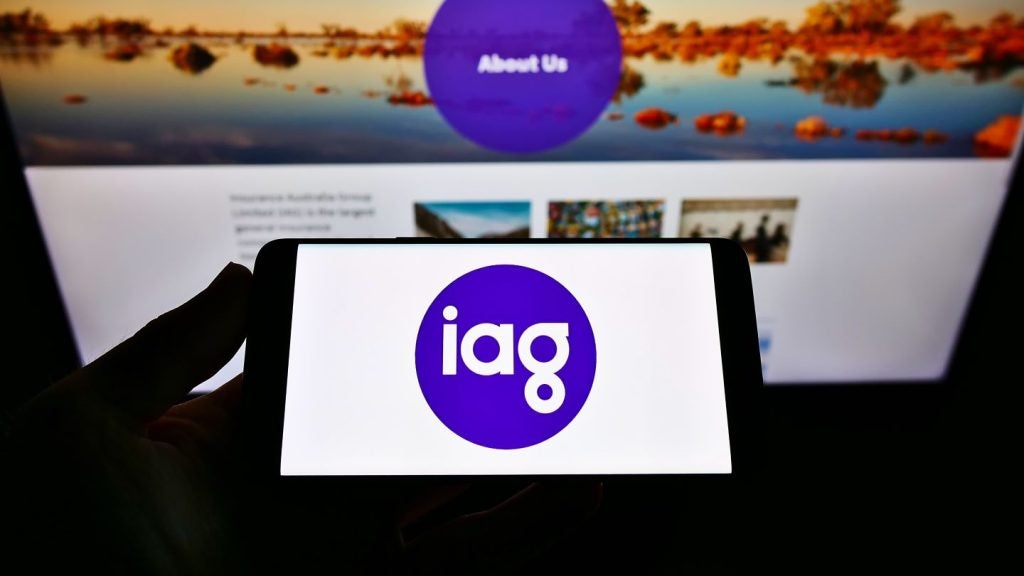Industry Attractiveness
Poland contains the largest insurance industry in the Central and Eastern Europe (CEE) region, in terms of gross written premium. The country alone accounted for around 40% of the region’s gross written premiums in 2011. Insurance companies operating in Poland had assets worth PLN147.7 billion (US$50.2 billion) in 2011, which represents a 0.9% increase from 2010.
Both the life and non-life insurance segments in the Polish insurance industry are dominated by foreign companies. There were 29 life insurers operating in Poland at the end of 2011, of which 22 were under majority foreign ownership. Furthermore, 23 of the 33 Polish non-life insurers were foreign-owned in 2011. Life insurance was the largest insurance segment in Poland, accounting for a share of 55.0% of the total industry value, while the non-life insurance segment accounted for the second-largest share of 40.1% in 2011.
The Polish insurance industry maintained a strong CAGR of 7.1% between 2008 and 2012. Although the insurance industry registered a decline in gross written premiums in 2009, mainly due to the adverse impact of the global economic crisis, the industry overcame the adverse effect at the end of the 2008- 2012 period. The total written premium value of the insurance industry increased from PLN43.0 billion (US$15.6 billion) in 2007 to PLN56.6 billion (US$19.2 billion) in 2011.
This growth was led by the non-life insurance segment, which registered a CAGR of 8.8% in written premiums, followed by life insurance segment, which recorded a CAGR of 5.5%. The non-life insurance segment registered a higher growth of 12.1% in 2011, compared to 7.6% in 2010, which was mainly due to the absence of the weather-related accidents registered in 2010. The segment’s growth was partially driven by the rising demand for fire, property and general liability products, although the motor insurance category was the main growth driver of Polish non-life insurance written premiums.
The industry is heavily dependent on agencies and insurance brokers for the distribution of policies, especially in the non-life insurance segment. The other prominent distribution channels in the country include bancassurance, multilevel marketing, distribution through convenience stores and e-commerce. Insurance brokers and agencies accounted for a combined share of more than 75% of the total non-life insurance written premium income in 2011.
Meanwhile, bancassurance, agencies and direct marketing were the primary distribution channels in the life insurance segment. In addition, direct marketing techniques, such as telemarketing and distance selling, are more prevalent in the Polish life insurance segment than the non-life insurance segment. The country’s increased internet and broadband penetration and the development of mobile internet have provided new channels for the distribution of insurance policies. This is encouraging Polish insurers to develop and implement multichannel distribution strategies.
Growth will be driven by the country’s strong economic development over the coming years. The government’s focusis on rules and regulations, such as increasing the competition in the mining, electricity and wholesale gas market thorough partial privatization and changes in rule to reduce red tape for setting up and running of firms. The country’s increasing foreign investment in insurance, growth in nominal wages and high government expenditure are also important macroeconomic growth drivers for the Polish insurance industry.
The industry is expected to benefit from the rising demand for private insurance after recent reforms to the pension system, which will result in lower contributions to a Polish pension fund. The developing middle class and rising awareness of insurance coverage among the young population will also generate more demand for insurance in the country.
The main challenge for the Polish insurance industry will be the changes to insurance regulations, including the implementation of Solvency II norms to ensure insurers maintain sufficient capital reserves to operate in difficult market conditions. It will also face issues regarding the changes to accounting norms, the weak Polish zloty and the risk of stagnation in leading European countries as the sovereign debt crisis starts to take effect. The industry’s increasing net operating expenses and claims, alongside its slow investment income growth, may also constrain its growth over the forecast period.

Access deeper industry intelligence
Experience unmatched clarity with a single platform that combines unique data, AI, and human expertise.
Segment Outlook
The Polish life insurance segment accounted for the largest share of 55% of the country’s total insurance written premium value in 2011. Although the penetration ratio of gross written premium as a percentage of GDP in the country declined slightly between 2007 and 2011, Poland retained the highest life insurance penetration rate of 2.1% of GDP among the Central Eastern European countries. Other CEE countries such as the Czech Republic and Hungary have life insurance penetration levels of 1.81% and 1.53% respectively. Unlike several other CEE countries, the Polish life insurance segment also made underwriting profits as it had a combined ratio of less than 100% in 2011. The segment is expected to continue making underwriting profits.
The demand for life insurance products increased again, after registering a slump in 2009. This was supported by reviving economic conditions and rising income levels. The segment’s written premium value increased from PLN25.1 billion (US$9.1 billion) in 2007 to PLN31.1 billion (US$10.6 billion) in 2011, at a CAGR of 5.5%. This was supported by rising demand for unit-linked, general annuity and group life insurance products.
Group life insurance products accounted for the largest share of 58.5% of the Polish life insurance written premiums in 2011. Group life insurance is popular in Poland, and is characterized by a wide range of insurance cover that is suitable for both employers and their employees, as it also provides the ability to protect the insured person and their family members.
The growth of the life insurance segment was also driven by the significant increase in the sales of unit-linked products between 2007 and 2011. The individual and group unit-linked insurance policies generated a written premium of PLN10.31 billion (US$3.5 billion) in 2011, and accounted for 33.1% of the overall life insurance segment.
Although the general annuity insurance category accounts for a very small proportion of the Polish life insurance segment, it registered impressive growth during between 2008 and 2012. The category grew faster than any other life insurance category, at a robust CAGR of 24.0%. It is expected to grow at CAGR of 14.8% until 2017, which will remain a higher growth rate than the other life insurance categories.
In Poland, 70% of the employee contributions have been reallocated from second-pillar mandatory pension funds to first-pillar state funds by a law approved in 2011. The reduction of employee contributions in pension funds following the new regulations was partly compensated by the strategic shift towards individual unit-linked businesses.
Life insurance products in Poland are distributed through a variety of channels, and bancassurance accounted for the largest share of 37.5% of the total life insurance written premium generated in 2011. However, scrutiny over bancassurance agreements to confirm whether it or not they comply with Polish law has started to increase, which may lead to some readjustment in the priority of life insurance distribution channels in the country.
Poland’s current economic conditions, changing customer behavior, supportive government regulation and intensive competitive pressure will be the key growth drivers for the life insurance segment. It will also benefit from the development of innovative insurance products in Poland, and the government’s efforts to support the insurance industry’s development.
Life insurance companies are expected to face important challenges, such as increased competition following the implementation of Solvency II norms, as well as declining company margins when price competition becomes more prevalent. It will also be more difficult for companies to gain additional market share if they offer only existing products or rely on saturated distribution channels. These challenges could restrict the premium generation of life insurance companies. Despite this, the life insurance segment’s written premium value is expected to achieve a CAGR of 7.1% between 2013 and 2017.
Distribution Channels

US Tariffs are shifting - will you react or anticipate?
Don’t let policy changes catch you off guard. Stay proactive with real-time data and expert analysis.
By GlobalDataPolish insurance companies sell their life insurance products either directly to customers or through a variety of distribution channels. The leading distribution channels for life insurance in Poland are direct marketing, bancassurance and agencies. These channels together accounted for more than 95% of life insurance written premium generated for distributing policies in 2011. The distribution of insurance products has evolved significantly due to technological developments such as the increased use of the internet and mobile phones in Poland. This provided new distribution channels for Polish insurers to capitalize on and, as such, Polish insurance companies are increasingly developing multi-channel distribution strategies that incorporate e-commerce and telemarketing.
The main change in the distribution of Polish life insurance was that the share of written premium generated through agencies declined as the share of written premium generated through direct marketing and bancassurance increased. The share of life insurance written premium generated through all distribution channels from agencies declined from 42.9% in 2007 to 25.1% in 2011. In contrast, the written premium generated through direct marketing increased in value from PLN2.2 billion (US$0.8 billion) in 2007 to PLN4.6 billion (US$1.5 billion) in 2011, at a CAGR of 19.6%.
Meanwhile, life insurance written premium generated through bancassurance expanded from PLN1.9 billion (US$0.7 billion) in 2007 to PLN5.2 (US$1.8 billion) in 2011, at an impressive CAGR of 28.7%. Agents remain a leading distribution channel for selling life insurance policies to businesses and private customers in Poland, despite this transition.
Bancassurance was the leading distribution channel for life insurance products in 2011, with a share of 37.5% of the total life insurance written premium generated through Polish distribution channels. The growth can be attributed to the large pre-existing client base of banks, which makes it easier for banks to market their insurance products to several customers.
However, the scrutiny of bancassurance agreements increased in 2012, as the Polish Insurance Ombudsman requested that the Polish Financial Supervision Authority and the Polish Antimonopoly Office examine whether or not bancassurance agreements comply with Polish laws. If the agreements do not comply the distribution channel dynamics of life insurance will change considerably.
Direct marketing was the second-largest distribution channel for life insurance in Poland, accounting for a share of 32.7% of the total written premiums generated through distribution channels. The rising sales of direct marketing of life insurance products could be attributed to the increasing popularity of online banking services, and the higher spending of insurers to promote their products through telephones and the internet.
Bancassurance and direct marketing are expected to remain the leading channels for distribution of life insurance products in Poland over the coming years. The gross written premium generated through bancassurance is expected to increase at a CAGR of 15.1% until 2017, and its share of total written premiums from all distribution channels is expected to increase to 46% in 2016. Meanwhile, direct marketing is expected to increase its share to 33.0% of the total written premiums with the written premium generated through the channel is expected to increase at a CAGR of 14.5% up to 2016. The changing strategies of the leading companies to generate more written premium through channels that require little commission, such as direct marketing or bancassurance, will drive the development of life insurance distribution dynamics.







